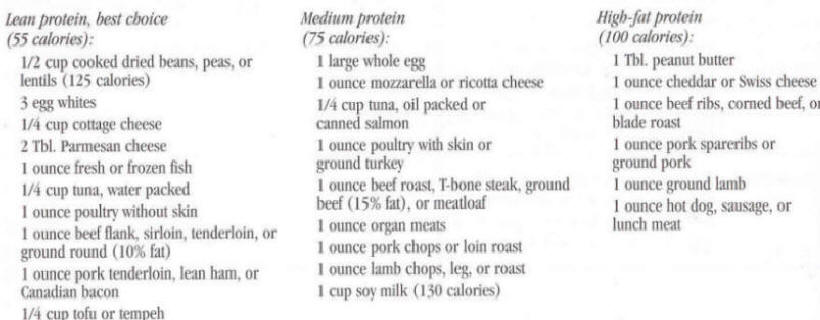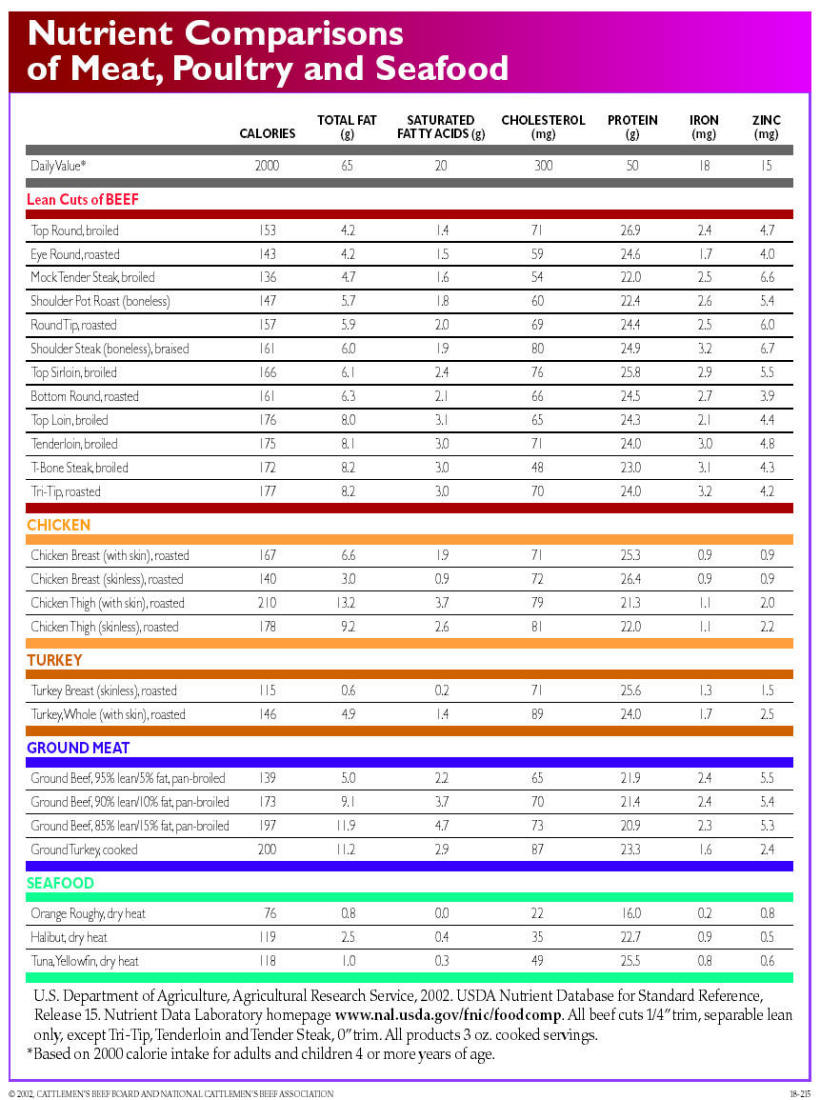Return to Foundation Food Plan
Kaiser Permanente's Healthy Weight Management Pyramid
*How much protein do you need (especially if you are a vegetarian)?
As a healthy-eating checkup, just see how your present way of eating compares to the suggestions below. You might notice that you don't eat very many foods from certain food groups.
Perhaps explore the ideas in the ESSENTIAL SKILL section #6, Planning and Preparing Delicious Recipes to include more foods from those groups.
If you find that you enjoy LARGE VOLUMES OF FOODS perhaps check out the Volumetrics article in the A Foundation Food Plan: Explore Various Pyramids and Eating Plans section. Also visiting the 13 Ways To Eat More Fruits and Vegetables section will provide lots of delicious ideas to eat MORE FOOD VOLUME while reducing excess ENERGY (or calories).
Another step might be to explore the Plan a Better Menu section for ideas about making small shifts in your present style of eating--one meal and snack at a time.
A next step might be to just review the SERVING SIZES (reference amounts) below to see how many portions you typically consume.
You might want to notice how many calories are in a typical serving, if you find that you aren't losing any weight. I encourage you as you try out any of these "tools" just to increase awareness of your present choices, and to provide you with some FLEXIBLE nutrition guidelines to follow.
Explore below What counts as one serving--a "reference" amount for different foods?
© 2004, Kaiser Permanente Northwest Health Education Services, Cultivating Health™ Weight Management Kit
To print off the pyramid click on: Weight management food pyramid diary.pdf
Explore Serving
Sizes
From Kaiser Permanente
Health Education Services
Food
retailers have increased serving sizes over the years—so much so, that most of
us have no idea what makes up one serving.
What counts as one
serving--a "reference" amount for different foods?
Bread and cereals
(80 calories)½ cup cooked pasta or barley
1/3 cup rice or cooked dried beans and peas
1/4 cup baked beans
1 small potato with skin, or ½ cup mashed
1/2 cup starchy vegetables (corn, winter squash)
1 slice bread or 1 roll (1 ounce)
1 6-inch tortilla
3 graham cracker squares
2 4-inch pancakes
½ English muffin, small bagel, or hamburger or
hot-dog bun
½ cup cooked cereal
½ cup Shredded Wheat or bran flakes
¾ cup other dry cereal, unsweetened
4–6 crackers (saltines, rye crisp, crisp breads)
3 cups popcorn, unbuttered, not cooked in oilVegetables
(25 calories)
½ cup cooked vegetables
1 cup raw leafy vegetables
¾ cup tomato or vegetable juiceVegetables and fruits are high in photochemicals, antioxidants, fiber, and high in water content.
Remember too that vegetables have only 25 calories/serving and fruit only 60-80 calories/serving, are full of nutrients, and are low in fat. They help you “eat large”—that is being able to eat a larger volume of food that has fewer calories and is packed full of essential nutrients. Choose these often.
The American Cancer society estimates that the rates of cancer could be lowered by 25% if we ate just 5 servings of fruits and vegetables each day! See 13 Ways To Eat More Fruits and Vegetables for many suggestions.
Explore the suggestions for healthful breakfasts, lunches, dinners, and snack ideas in the ESSENTIAL SKILLS section #6.
Fruits
(60 - 80 calories)
1 fresh medium fruit
½ banana or grapefruit
1 cup melon
1¼ cups fresh strawberries
½ cup fruit canned in juice or without sugar
½ cup apple, grapefruit, or orange juice
1/3 cup cranberry, grape, or prune juice
2 tablespoons raisins and most dried fruit
Healthier fats
(45 calories)
1 teaspoon oil (not palm, coconut, or
hydrogenated)
1 teaspoon mayonnaise
1 tablespoon low-fat mayonnaise
1 teaspoon margarine
1 tablespoon reduced-fat margarine
1 tablespoon regular salad dressing
2 tablespoons reduced-fat salad dressing
1 tablespoon nuts
3 tablespoons avocadoMilk and milk substitutes
(90 calories)
1 cup fat-free milk, 1% milk, 2% milk, or lowfat buttermilk
1 cup dry fat-free milk, reconstituted
8 ounces plain fat-free or low-fat yogurt
1½ to 2 ounces fat-free cheese
1½ ounces reduced-fat cheese
1 cup fortified soy beverageHelps prevent osteoporosis and lower blood pressure
Saturated fats Risky fats
(45 calories)
1 teaspoon palm, coconut, or hydrogenated oils
1 teaspoon butter
2 tablespoons cream
1 tablespoon cream cheese
1 slice baconProtein sources
(55–100 calories)
½ cup cooked dried beans, peas, or lentils
3 egg whites or 1 large whole egg
¼ cup cottage cheese
2 tablespoons Parmesan cheese
¼ cup canned tuna or salmon
1 tablespoon peanut butter
1 ounce of any meat—fresh or frozen fish,
poultry, beef, pork, lamb, hot dog, sausage,
lunch meat, corned beef, or organ meats
¼ cup tofu or tempeh
1 ounce cheese
1 cup soy milkGeneral Instructions: Limit sugar, soda, sweetened drinks, candy, cookies, donuts, sweet rolls, cakes, pies, ice cream, syrups, and chips to fewer than 75 calories per day.
Limit high-fat meats, poultry skin, egg yolks, cream, butter, and regular cheese.
Avoid partially hydrogenated, palm, and coconut oils, and foods fried in them (most fried fast foods).
Expanded Meat and other protein source list
© 2004, adapted with permission, Kaiser Permanente Northwest Health Education Services, Cultivating Health™ Weight Management Kit
Each food item equals one serving, except the protein sources, which are in one-ounce amounts. You need four to seven ounces of protein per day. Remember: Calorie and fat contents vary. Read nutrition labels or check references when making food choices.
Moderate protein option: Some people feel more satisfied (less hungry) with a slight increase of low-fat proteins. You could substitute up to 3 servings (3 ounces) of low-fat protein for 2 - 3 servings from the grain group. Eating some protein or milk products at each meal or snack slows down digestion and moderates blood sugars.
Here is a list from Morningstar Foods:
PROTEIN COMPARISON CHART (All products 3 oz. cooked servings):
To print off: Nutrient Comparisons of Meat, Poultry, and Seafood.pdf
Taken from the National Cattleman's Beef Association Website: http://www.beefnutrition.org/matedownloadsforpatientsandclients.aspx You will also find a variety of nutrition information, purchasing and preparation ideas, and lean and easy recipes that you can download.


